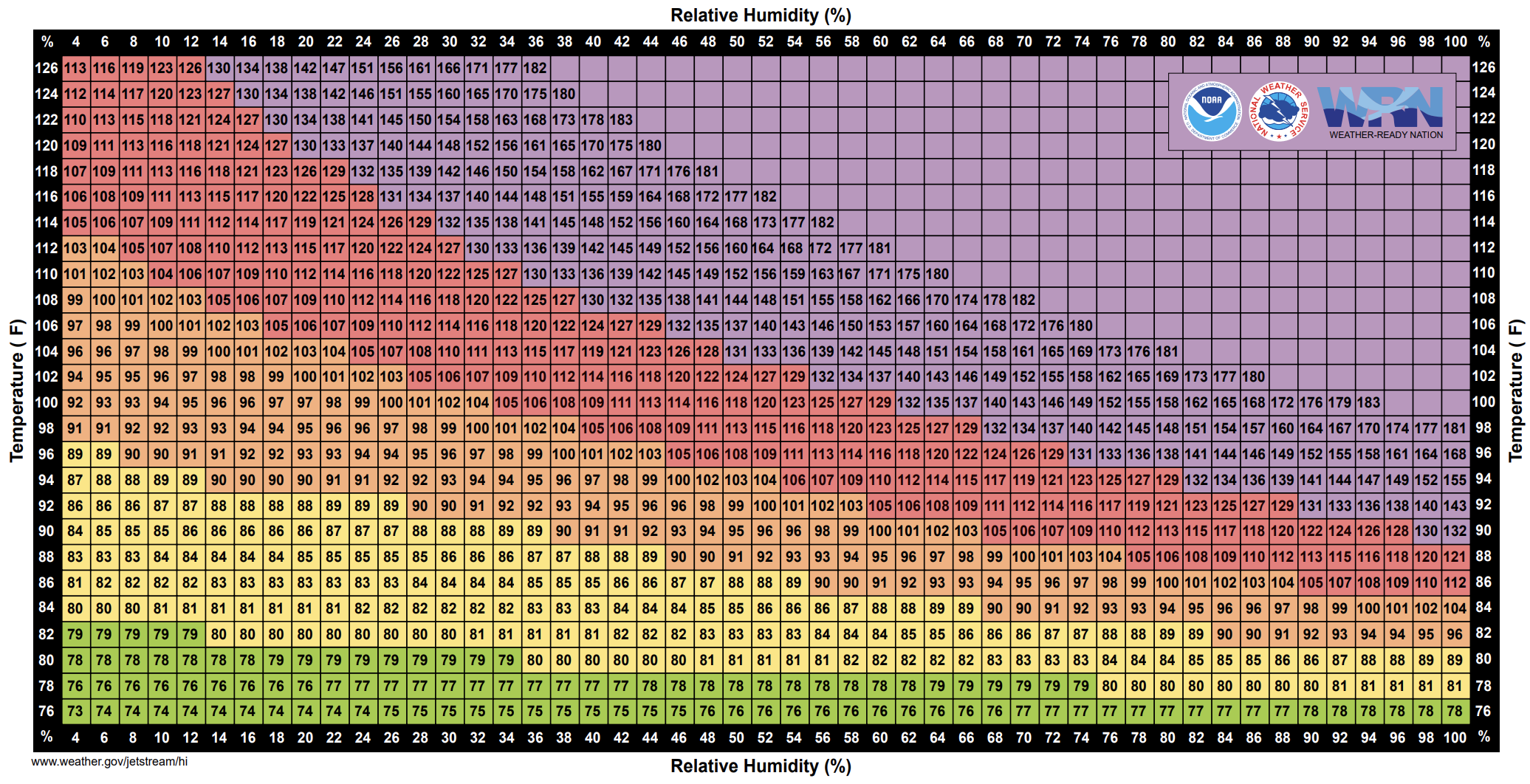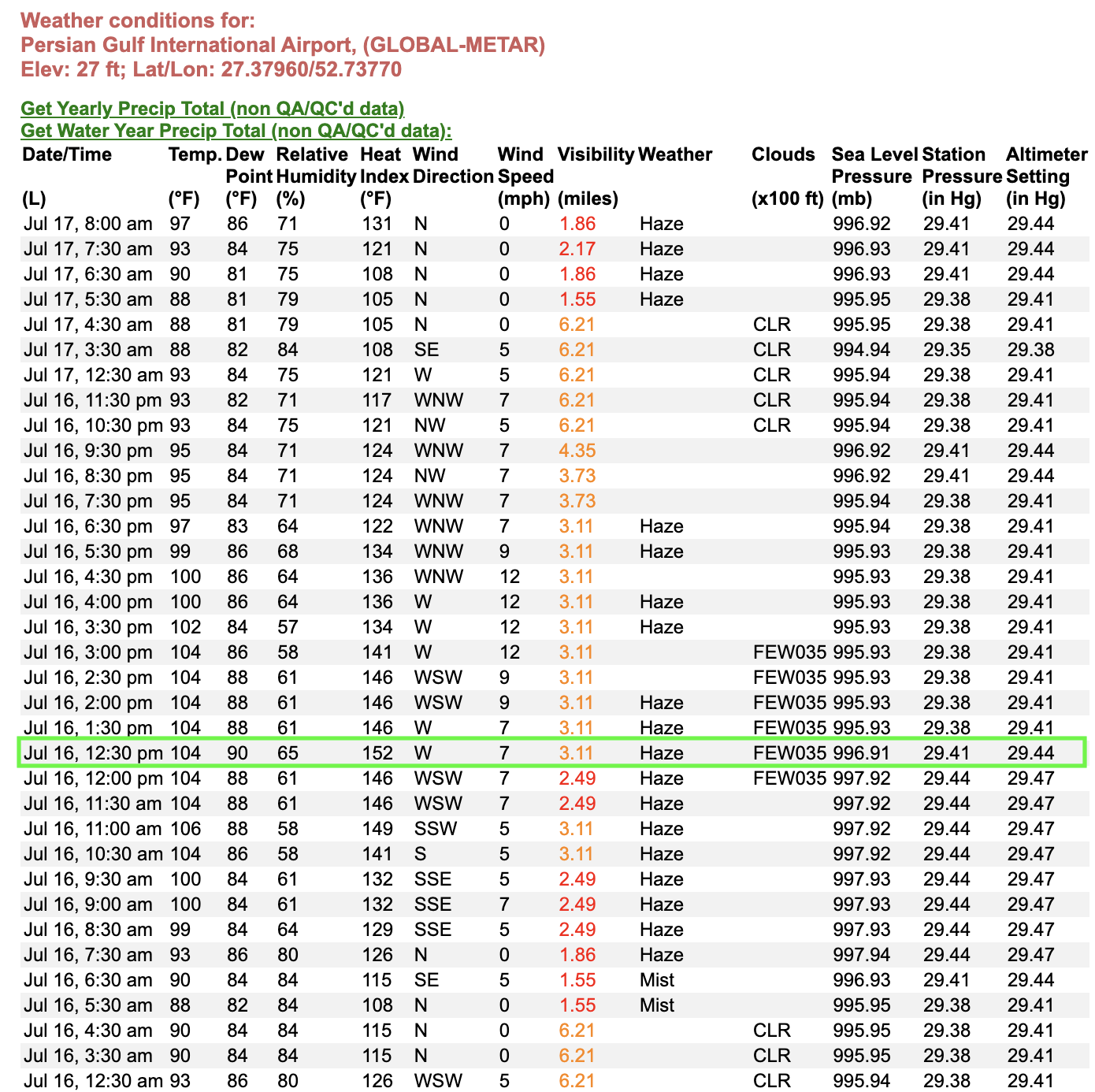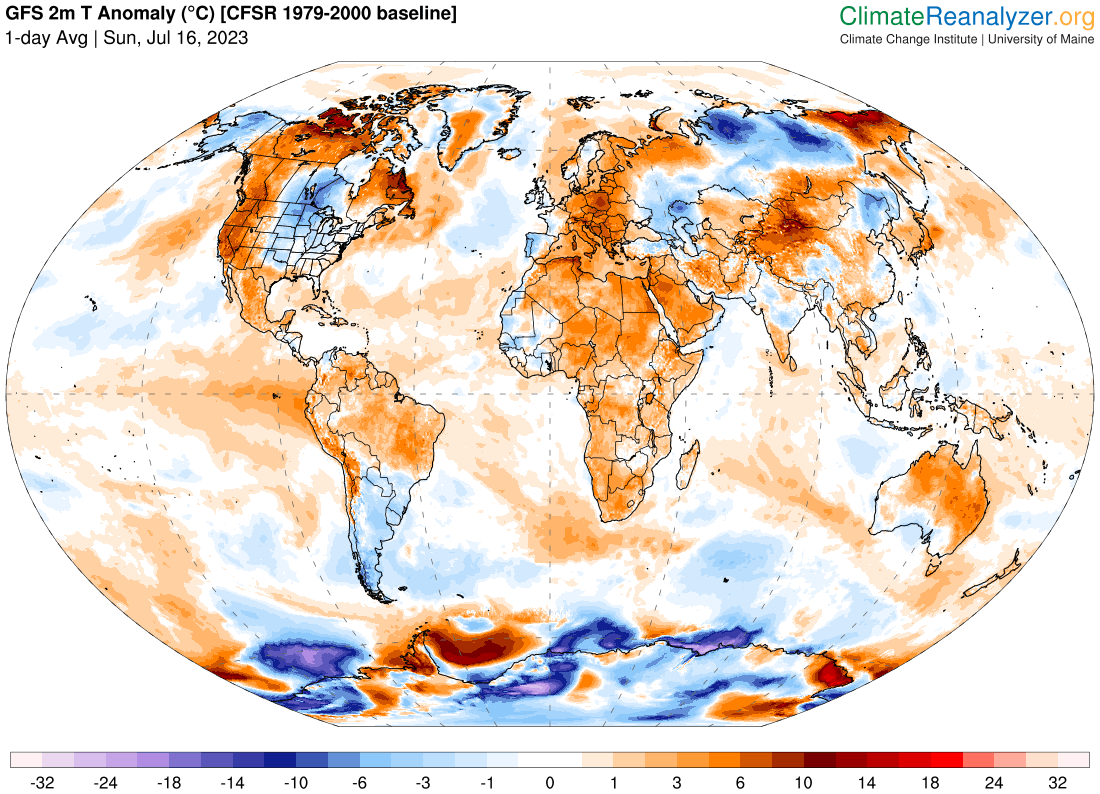Heat index hits 66C at Persian Gulf International Airport
Most people living on Earth today will never experience the type of heat observed at Iran’s Persian Gulf International Airport on Sunday.
A rare combination of extremely high temperatures and abundant atmospheric moisture created oppressive heat along the southern coastline of Iran on Sunday, July 16.
While air temperature observations give us a good idea about how hot it is outside, other elements like wind and humidity also affect how hot the weather feels to our bodies. In general, windy weather makes us feel cooler and humid weather makes us feel hotter.
Meteorologists can estimate how hot or cold the weather feels by using equations that factor in air temperature and other atmospheric variables. One of the most widely-used methods for estimating the impacts of hot weather is called the ‘heat index’, which combines air temperature and humidity.

Image: Heat Index chart used by the U.S. National Oceanic and Atmospheric Administration. Source: NOAA
On Sunday, searing heat from the interior of Iran clashed with humid air flowing off the very warm waters of the Persian Gulf. At one point in the afternoon, the temperature at the Persian Gulf International Airport reached 40ºC (104ºF), with a relative humidity of 65% (the dew point was 32ºC/90ºF). This created an apparent temperature of 66.7ºC (152ºF) based on the Heat Index.

Image: Observations from the Persian Gulf International Airport on Sunday, with the day’s peak heat index value highlighted by the green box. Source: NOAA
This combination of heat and humidity is beyond the threshold that is considered safe for human bodies, based on research by scientists at Pennsylvania State University.
There are no official records for heat index. However, observations in excess of 80ºC (176ºF) have been observed in the past, including at Dhahran, Saudi Arabia, on July 8, 2003.
Other global hot spots on Sunday
The middle of summer in the Northern Hemisphere is always a time for extreme heat, and this season has been no exception.
The oppressive heat observed at the Persian Gulf International Airport was one of many exceptional temperature extremes that occurred north of the equator on Sunday.

Image: Modelled surface air temperature anomalies on Sunday, July 16. Red areas show where the air near the ground was warmer than average for this time of year. Source: ClimateReanalyzer.org
The highest temperature recorded on Earth on Sunday, July 16, was just over 53ºC (128ºF). This sweltering temperature was observed at several weather stations in California’s Death Valley National Park, including the well-known and aptly named hotspots of Furnace Creek and Stovepipe Wells.
China also saw extreme heat on Sunday, with a weather station at Sanbao registering a maximum temperature of 52.2ºC. If valid, this will be China’s highest temperature on record, according to weather historian Maximiliano Herrera.